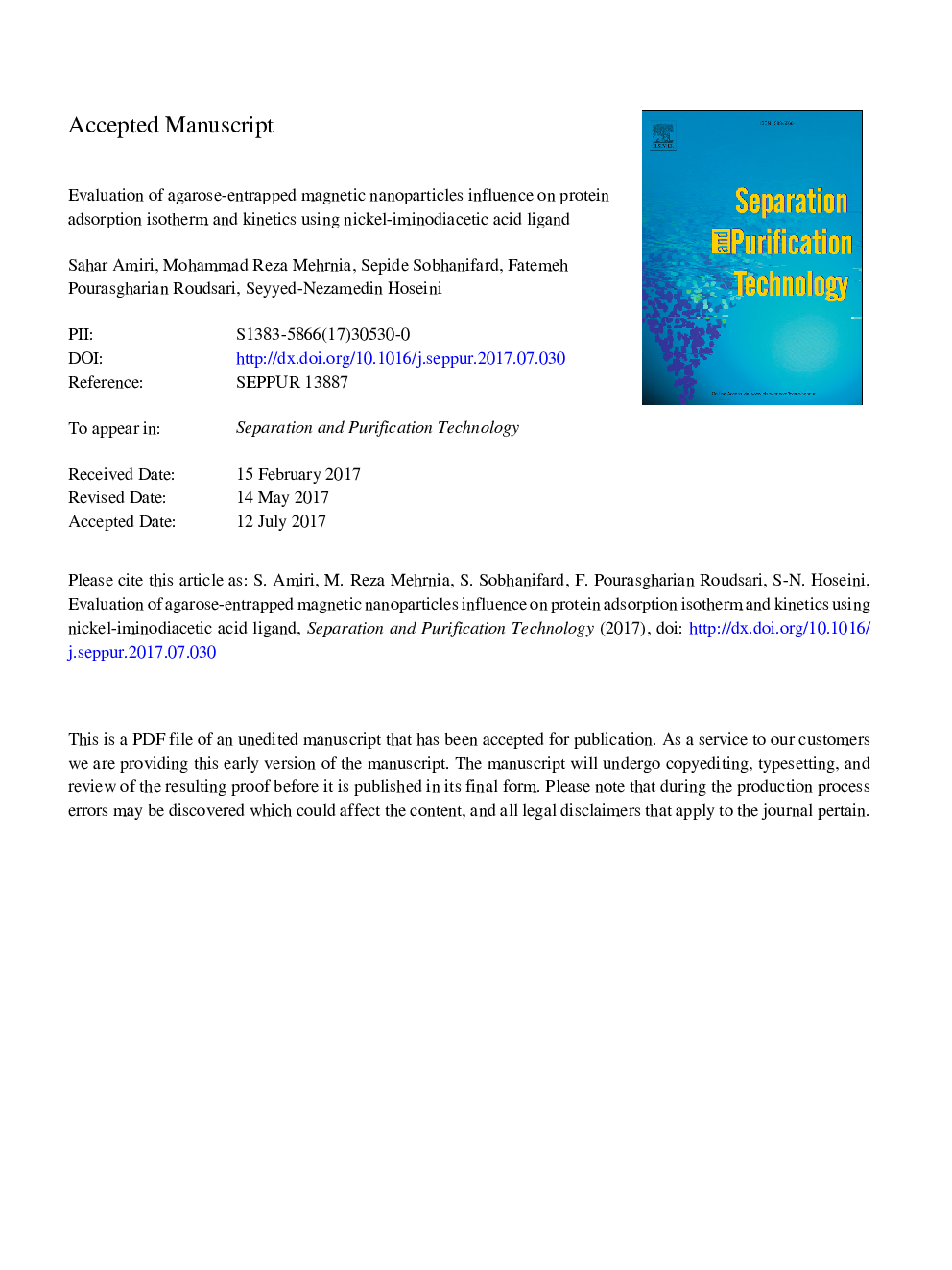| Article ID | Journal | Published Year | Pages | File Type |
|---|---|---|---|---|
| 4989819 | Separation and Purification Technology | 2017 | 32 Pages |
Abstract
Employing magnetic beads for immobilized metal affinity chromatography application was studied with the approach of magnetic effects investigation. Hence, fabricated magnetic nanoparticles-carrying beads were functionalized with Ni(II)-iminodiacetic acid (IDA). BET-BJH results showed that nanoparticles affected pore sizes lower than 10Â nm. Therefore, the pore blockage by protein molecules is considered as an outcome of the new pore diameter in magnetic beads. In accordance, bovine serum albumin (BSA) adsorption isotherms revealed a significant difference between magnetic and nonmagnetic beaded matrices. For nonmagnetic beads, adsorption isotherm followed Langmuir model. However, one step increase in adsorption isotherm for initial BSA concentration from 0.5Â mg/ml to 0.8Â mg/ml was observed on magnetic beads due to pore blockage by proteins. BSA Adsorption kinetics on beads was found to follow the assumptions of an intraparticle diffusion-controlled pseudo-second order mechanism, with higher adsorption rate constants at lower adsorbate concentrations. Furthermore, though the same IDA density on both non/magnetic beads, presence of magnetic nanoparticles reduced the required equilibrium time (up to 60Â min), the saturation path of BSA adsorption breakthrough curves, dynamic binding capacity and the number of theoretical plates. It is concluded that magnetic characteristic of composite agarose adsorbent carrying Fe3O4 nanoparticles affects protein's conformation. Thus, BSA travel toward ligand is enhanced and sped up.
Related Topics
Physical Sciences and Engineering
Chemical Engineering
Filtration and Separation
Authors
Sahar Amiri, Mohammad Reza Mehrnia, Sepide Sobhanifard, Fatemeh Pourasgharian Roudsari, Seyyed-Nezamedin Hoseini,
